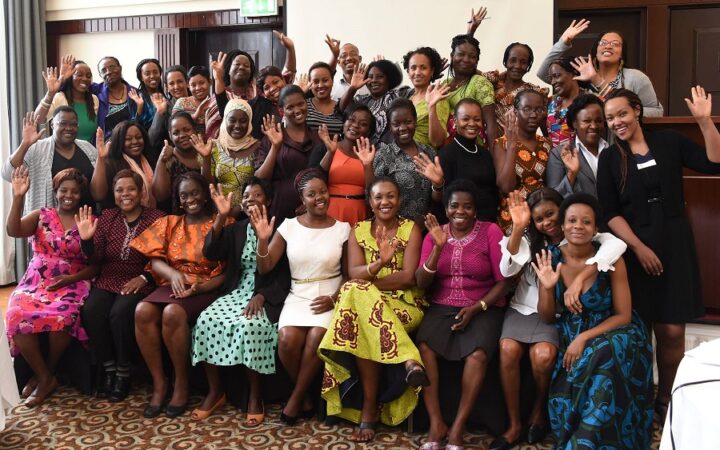BY MOHAMMED T. ABIODUN
On February 15, 2024, subscribers to MTN’s services across major cities in the country could neither make nor receive calls or use data services on the network. The downtime lasted for about four hours, and the internet fumed with frustration over the disruption.
In a statement by Funso Aina, senior manager, External Relations, MTN Nigeria, the network provider noted that: “Our engineers are working hard to resolve with services gradually being restored in some areas,” and further explained that the reason for the service disruption was due to major cuts to its fibre assets across the country. These cuts happened almost within the same time in three major cities in Nigeria.
Damage to fibre optic cables has become a major challenge for telecommunications companies in Nigeria. Oftentimes, these cuts are the acts of saboteurs, construction companies or thieves who steal the cables with the intention of selling them in the black market. The resulting damage to this telecommunication infrastructure is what we witnessed in the disruption of MTN’s services on February 15, 2024. Calls could not be made—neither could they be received—and data services were down. Users were shut off from the internet, which today has become the biggest facilitator of economic activities in the country.
The damage to MTN’s fibre cables is one example of an all too often occurrence across the country. Almost all the Mobile Network Operators (MNOs), Internet Service Providers (ISPs), Metropolitan Fiber Optic Network Operators and Infracos have filed several complaints with the regulator, the Nigerian Communications Commission (NCC) on countless cases of damage to their fibre in various parts of the country.
Advertisement
Fibre optic networks are undoubtedly crucial to the delivery of telecommunications services across the world. It is a technology that uses thin strands of glass or plastic to transmit data, whether telephone signals, internet communications or cable television signals. It is the fastest and most widely used medium of backhaul transmission, as it carries higher bandwidth which in turn provides higher speed, low latency and low interference. Tens of thousands of kilometres of fibre optic cables are laid across Nigeria by these operators in their bid to deliver quality telecommunication services to their subscribers.
Nigeria is reported to have over 79,000 kilometres of fibre optic cables laid across the country. Though far from being sufficient to meet our broadband needs, these cables have been the subject of vandalism and theft over the past decade. In 2023, the NCC stated that over 50,000 cases of destruction of fibre optic cables and other telecommunication infrastructure had been reported. The Commission’s Q2 report for 2023 noted that fibre optic infrastructure vandalism contributed to over 30% of all reported network outage incidents. A source from the regulator informed me that telecommunication companies face an average of a total of 1,600 cuts per month.
Reports from telecommunication companies buttress this disturbing trend. The recent one from MTN Nigeria notes that damages to three of its fibre cables were due to the activities of a construction company, gas pipe installation and bush burning respectively.
Advertisement
These cable cuts are one of the major reasons we experience downtime in telecommunication services. Concomitantly, they have resulted in low download speed, high drop call rates, and poor voice quality among others. Users are affected and businesses that rely on telecommunications services for the delivery of their services cannot do so optimally. Take for example the case of banking services which we mostly conduct through our mobile phones today. When telecommunication services are down, banking services suffer too.
According to a report, in 2022 alone, over N13 billion was spent by mobile network operators, InfraCos, and other service providers in fixing damages to fibre cuts and other telecommunication infrastructure. In 2023, this amount rose to N14.6 billion. In the same report, operators in the telecommunications sector faced revenue losses amounting to N12 billion in both 2022 and 2023 due to customer compensation, site relocations and fibre resilience costs.
A source in one of the telecommunications companies told me that these challenges were sucking deeply into their resources and preventing them from making the kinds of investments they would ordinarily have been making.
“I think people are taking the resilience of the telecommunications industry for granted,” he said. “We have not increased prices of our services in years, despite the increase, I mean doubling in the cost of the raw materials we use to run our industry. Despite this challenge, we are now being faced with the issue of damage to our infrastructure. If we continue this way, we will begin to see losses and the market will no longer be viable. We would no longer be able to make investments as all our earnings would be used in fixing damaged infrastructure to ensure that we can deliver on our services.”
Advertisement
Indeed, these huge unplanned costs to fixing damaged infrastructure and fibre cuts could have been invested by telecommunications companies in improving their network services. This could come in the form of setting up more base stations, purchasing new equipment, employing new staff, laying more cables across unserved communities and equipment maintenance. Not to mention the impact of downtime on subscribers and their businesses.
Telecommunications operators have appealed to the federal government to do more to protect their infrastructure. They have called on the government to designate telecommunications infrastructure as a critical national infrastructure (CNI) protected by the law. This, they note will provide backing to the law enforcement agencies to tackle the challenges of vandalism and theft of these assets.
Already, the executive vice chairman and chief executive officer of the Nigerian Communications Commission, Aminu Maida stated during his interaction with media executives and correspondents that high-level advocacy was ongoing by the commission with key government stakeholders to designate telecommunication infrastructure as critical national infrastructure.
About 16 years ago, the critical national infrastructure (CNI) bill was presented to the national assembly for passage. It failed. That failure left Nigeria’s telecommunication infrastructure—from base transmission stations to towers, to fibre optics—endangered, with attendant drops in telephony services.
Advertisement
Today, it has become a more pressing need than ever for the government to impress its stamp on legislation designating telecommunications infrastructure as CNI. Aminu Maida would need to pull up his sleeves and make a strong case for this. If he gets this done, he would be saving the industry he oversees an average of N25 billion in needless expenditure annually—money that would then be channelled into more investments in the telecommunications industry with corresponding improved service delivery by the operators.
But before achieving these victories, it is essential for citizens, who are the primary consumers of telecommunication services and who see these services as second to having a meal on their table to take ownership of the telecommunications infrastructure around them. Residents along these networks should embrace a sense of communal ownership, safeguarding the facilities as if they were their personal properties. Where they see vandals destroying this infrastructure, they owe themselves and society the duty to promptly report to the authorities, and when possible, take measures to discourage such destructive activities.
Advertisement
Construction firms have a part to play, too. A significant percentage of infrastructure damage to fibre is due to construction work. It is important that the government puts in place and enforces stringent regulations for construction workers to inform telecommunication operators well ahead of time before they carry out excavation works around fibre cables on their sites. This will allow the operators to relocate their fibre or make alternatives for service provision.
These are immediate steps we can take to achieve uninterrupted telecommunications services, like the one seen on February 15, 2024, with huge unquantifiable losses for operators and customers alike.
Advertisement
Abiodun writes from the FCT. He can be reached via [email protected].
Advertisement
Views expressed by contributors are strictly personal and not of TheCable.
Add a comment






